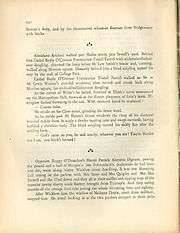Asterism (typography)
In typography, an asterism, ⁂, is a typographic symbol consisting of three asterisks placed in a triangle, and is a type of dinkus.
| ⁂ | |
|---|---|
Asterism (typography) | |
| In Unicode | U+2042 ⁂ ASTERISM (HTML ⁂) |
| Different from | |
| Different from | U+0B83 ஃ TAMIL SIGN VISARGA U+2234 ∴ THEREFORE U+2235 ∵ BECAUSE |
The name originates from the astronomical term for a group of stars[1] Nowadays the symbol is used rarely and is nearly obsolete.[2] Its purpose is to "indicate minor breaks in text",[3] to call attention to a passage, or to separate sub-chapters in a book.

In more recent texts, a row of three or more asterisks, or three or more dots, are more common.[2] Otherwise, an extra space between paragraphs is used. An asterism or its analogue may be used in conjunction with the extra space to mark a smaller subdivision than a sub-chapter.
It can also be used to mean "untitled" or author or title withheld – as seen, for example, in some editions of Album for the Young by composer Robert Schumann (№ 21, 26, and 30).[4]
In meteorology, an asterism in a station model indicates moderate snowfall.[5][6]
Dinkus
A dinkus is a typographical device to divide text, such as at section breaks. An asterism is sometimes used for this purpose. Another common dinkus is three asterisks or three dots in a horizontal row.[7][8] A small black and white drawing[9] or a fleuron (❧)[8] may be used for the same purpose.
Among older Hungarian Americans and Polish Americans, the word is an archaic term for Easter Monday.[10]
References
- From the Greek astēr (star) Alexander Humez, Nicholas D. Humez (2008). On the Dot: The Speck That Changed the World, p. 72 & 186n. ISBN 978-0-19-532499-0.
- Radim Peško, Louis Lüthi (2007). Dot Dot Dot 13, p. 193. Stuart Bailey, Peter Bilak, eds. ISBN 978-90-77620-07-6.
- Hudson, Robert (2010). The Christian Writer's Manual of Style. p. 396. ISBN 978-0-310-86136-2.
- Taruskin, Richard (2005). The Oxford history of western music, Volume 3, p. 311. ISBN 978-0-19-516979-9.
- Ahrens, C. Donald (2011). Essentials of meteorology: an invitation to the atmosphere (6th ed.). Belmont, CA: Brooks/Cole. p. 461. ISBN 9780840049339. OCLC 651905769.
- "Station Model Information for Weather Observations". National Weather Service Weather Prediction Center. Retrieved 2019-07-16.
- Lundmark, Torbjorn (2002). Quirky Qwerty: the story of the keyboard @ your fingertips. University of New South Wales. p. 120. ISBN 9780868404363.
- David Crystal (2016). Making a Point: The Pernickety Story of English Punctuation. London Profile Books. ISBN 9781781253519.
- James Phillip McAuley (1964). "Quadrant". 8. H.R. Krygier: 33. Cite journal requires
|journal=(help) - Elizabeth Hafkin Pleck (2001). Celebrating the Family: Ethnicity, Consumer Culture, and Family Rituals. Harvard University Press. p. 90. ISBN 9780674002302.